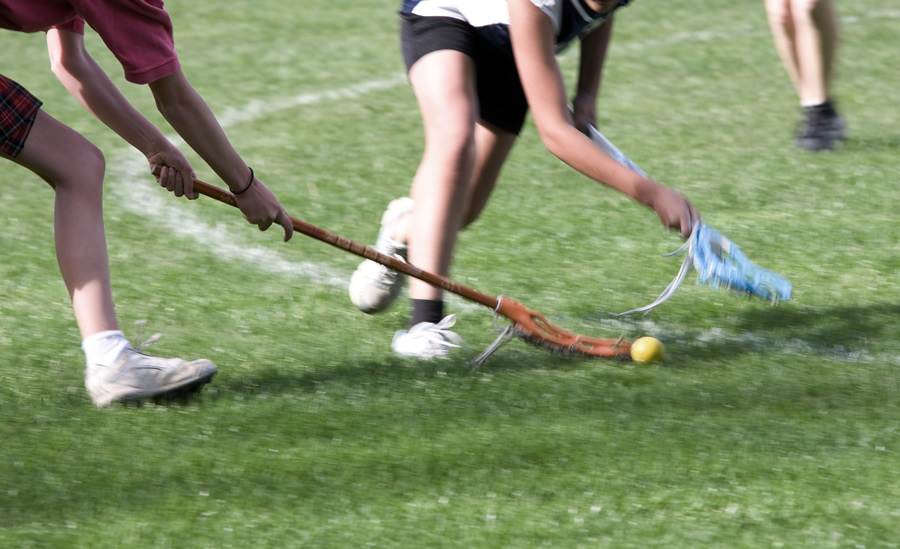We know headgear mandates reduce rates of concussion in girls’ lacrosse, so why are they controversial?

Protective headgear mandates in high school girls’ lacrosse are controversial but new research is showing they shouldn’t be.
Encouraging Riskier Behavior
A vocal faction in the sport believes that the use of protective headgear in high school girls’ lacrosse will encourage riskier behaviors on the field which, in turn, will lead to more aggressive play and greater frequency of injury. This phenomenon is known as the Peltzman effect, sometimes referred to as the ‘gladiator effect,’ where individuals will take more risks because they feel empowered by enhanced safety measures and protective equipment such as helmets.
Girls’ Lacrosse is a Non-contact Sport
Unlike boys’ lacrosse which involves full physical contact that is often head-to-head, high school girls’ lacrosse is a non-contact sport that emphasizes ball handling skill, speed, and agility. Opponents of a helmet mandate fear that implementation of a protective headgear requirement would change the very nature of girls’ lacrosse from being an artful game of precision to one where brute force dominates. Traditionalists in the lacrosse community say this would lead to a loss of what separates girls’ lacrosse from other sports and erode the attributes which make it a distinct and unique game.
Helmets Could Impede a Player’s Peripheral Vision
Most of the head injuries sustained by girls playing lacrosse are the result of incidental stick or ball contact. Along these lines, an objection is sometimes raised that protective headgear could impair peripheral vision and impede a player’s ability to see a ball or stick coming at them from certain angles. This argument, however, is thought by some to be specious because similar objections do not figure as prominently when it comes to the mandatory use of helmets in boys’ lacrosse.
Research Confirms that Protective Headgear Mandates in High School Girls’ Lacrosse Mitigates Concussion Risk
A study conducted by researchers from UC Davis and Mason’s School of Kinesiology refutes the objections raised over helmet mandates and found that the use of protective headgear did reduce the risk of concussion in high school girls’ lacrosse. The study compared concussion rates among players in Florida with rates observed in 31 other states. Florida was selected as the comparison benchmark because it is the only state in the US that mandates the use of helmets in high school girls’ lacrosse. The helmets must meet ASTM International performance standard F3137. The findings showed a 59% greater incidence of concussions, inclusive of athlete exposures during games and practices, in states that did not have a mandate. For the incidence of concussions sustained by athletes during competitive play, the data showed a 74% higher rate in states that had no helmet mandate. The study co-authors also cited previous research which found that the use of helmets did not result in more aggressive game play behavior.
Further Research Should Be Conducted on the Effectiveness of Helmet Mandates in Women’s Lacrosse
The encouraging results of this study led the co-authors to recommend further investigation on whether the use of protective headgear would result in similar reductions in concussion risks at the collegiate, youth, and club levels of play. The effectiveness of helmet use in girls’ lacrosse will likely be the focus of ongoing research given the extensive body of knowledge that links serious neurodegenerative diseases occurring later in life with undetected or unresolved concussions in young athletes.
To learn more about the importance of headgear in high school girls' lacrosse, read this article by School of Kinesiology faculty Shane Caswell. Mason’s School of Kinesiology offers degree programs that focus on the scientific study of human movement and its application in settings such as athletics, dance studios, and clinical practices. Please visit our website to learn more.
